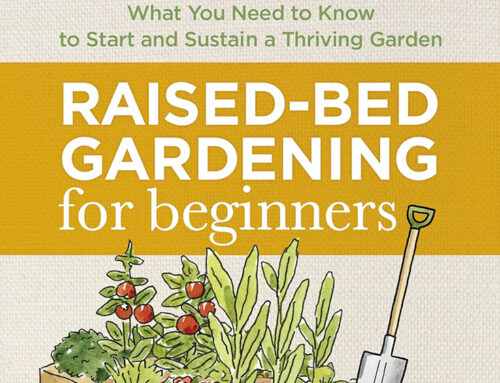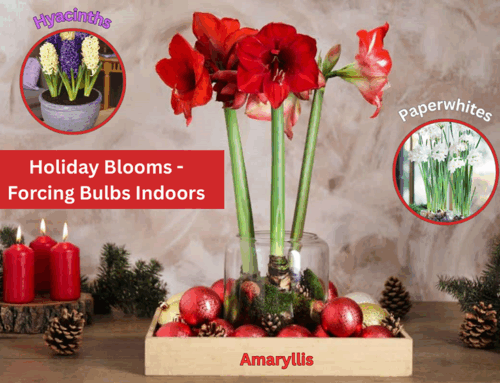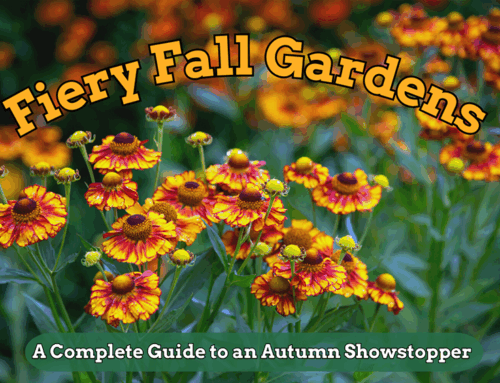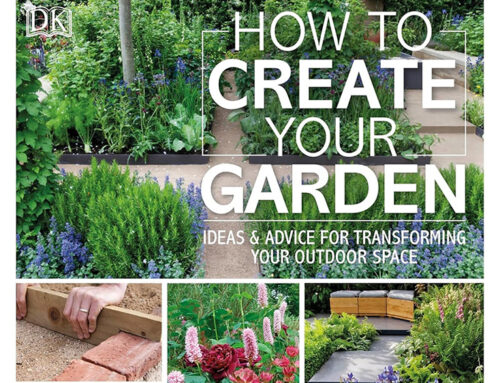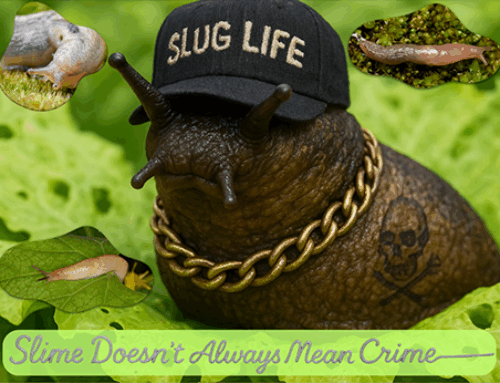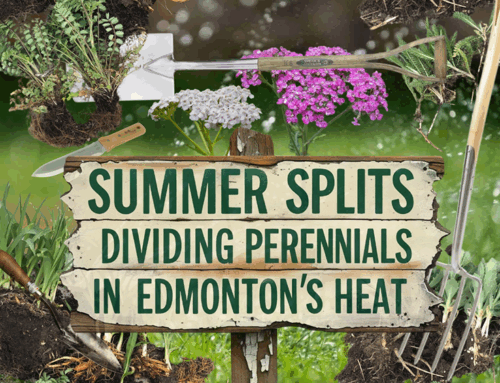Essential Garden Tools for the Beginner
by Brett Kerley
If you are new to gardening, having the right garden tools can make your experience more enjoyable and efficient. Here is a list of essential tools every beginner gardener should have, along with tips on maintenance.
When I started gardening as an adult, I was given some great advice. “Start with the least expensive tools. If they break, it’s because you’re using them. Then you take the next step by purchasing better quality tools.” If the cheap garden tools haven’t broken, you haven’t used them enough, so you didn’t waste too much money buying them!
Hand Trowel
A hand trowel is indispensable for digging small holes, transplanting seedlings, and mixing soil. There are several types to consider:
- Standard Trowel: A versatile tool with a pointed blade, ideal for general gardening tasks.
- Transplanting Trowel: Features a narrow, long blade, perfect for digging deep holes and transplanting seedlings.
- Dixter Trowel: Has a curved, scoop-like blade for moving soil efficiently.
- Weeding Trowel: Comes with a notched blade to help remove weeds by the root.
- Scoop Trowel: Has a broad, deep blade for moving large amounts of soil or compost.
Choose one with a comfortable grip and a sturdy metal blade to ensure durability. Stainless steel blades resist rust and are easy to clean. After use, wipe off dirt and occasionally oil the blade to prevent corrosion. I have fond memories of buying my first hand trowel. While visiting Holes greenhouse, I was approached by a lovely older lady who asked if I needed help. She went out of her way to explain the importance of a good trowel. I have that trowel to this day and use it almost every time I garden. I later found out that the sweet old lady was none other than Lois Hole.
Garden Fork
 A garden fork is useful for loosening compacted soil, aerating garden beds, and mixing in compost. There are different types of garden forks to consider: including digging forks (for heavy-duty work) and border forks (for lighter tasks).
A garden fork is useful for loosening compacted soil, aerating garden beds, and mixing in compost. There are different types of garden forks to consider: including digging forks (for heavy-duty work) and border forks (for lighter tasks).
- Digging Fork: Has strong, sturdy tines that penetrate hard soil, making it ideal for breaking up compacted ground.
- Border Fork: Smaller and lighter than a digging fork, great for working in tight spaces or raised beds.
- Compost Fork: Features widely spaced tines, making it easy to turn compost and mix organic matter.
- Potato Fork: Designed with curved, blunt tines to gently lift root vegetables without damaging them.
Clean the tines after use and store them in a dry place to prevent rust.
Spade
A spade is perfect for digging, edging, and moving soil. Types include:
- Digging Spade: A general-purpose spade with a flat blade, great for turning soil and planting.
- Border Spade: A smaller, lighter version of a digging spade, useful for working in flower beds.
- Edging Spade: Has a straight, sharp blade for creating clean garden bed edges.
- Trenching Spade: Features a long, narrow blade for digging deep trenches or narrow holes.
Stainless steel blades are easier to clean and maintain. Wipe down after use and occasionally sharpen the edge. Look for one with a sharp, durable blade and a comfortable handle to make digging less strenuous.
Pruning Shears
Also known as secateurs, pruning shears are essential for trimming plants, cutting back overgrown foliage, and removing dead branches. These are the different types of pruning shears:
- Bypass Shears: Have two curved blades that work like scissors, ideal for cutting live stems and branches cleanly.
- Anvil Shears: Feature a single sharp blade that cuts against a flat surface, great for cutting dry or dead wood.
- Ratchet Shears: Designed with a mechanism that allows for easier cutting through thick branches with less effort.
- Long-Reach Pruners: Have extended handles, making them useful for trimming high branches or deep into shrubs.
Keep the blades sharp and disinfect them regularly to prevent plant diseases from spreading.
Garden Gloves
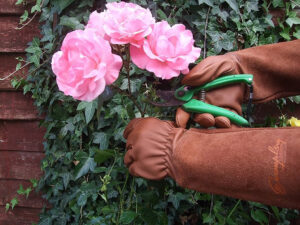 Protecting your hands while gardening is crucial. A good pair of garden gloves will shield your hands from thorns, dirt, and blisters. There are several types to choose from:
Protecting your hands while gardening is crucial. A good pair of garden gloves will shield your hands from thorns, dirt, and blisters. There are several types to choose from:
- Leather Gloves: Durable and protective, ideal for handling thorny plants and rough materials.
- Rubber-Coated Gloves: Provide excellent grip and water resistance, great for wet or muddy conditions.
- Fabric or Cotton Gloves: Lightweight and breathable, best for light gardening tasks but not very protective.
- Nitrile-Coated Gloves: Flexible and snug-fitting, offering a balance of dexterity and protection.
- Gauntlet Gloves: Extend past the wrists, offering extra protection when dealing with prickly plants like roses.
Wash gloves after several uses to remove dirt and extend their lifespan. Store them in a dry place to prevent mold and deterioration.
Watering Can or Hose
Watering is vital for healthy plant growth. Choosing the right watering tool depends on your garden size and needs:
- Watering Cans: Ideal for small gardens, indoor plants, and container gardening. They come in plastic (lightweight and affordable) or metal (durable and rust-resistant) options.
- Garden Hoses: Essential for larger gardens, available in various lengths and materials. Look for kink-resistant and UV-protected hoses for longevity.
- Soaker Hoses: Provide deep watering by slowly releasing water directly into the soil, reducing evaporation.
- Drip Irrigation Systems: Automated watering systems that deliver precise amounts of water to plant roots, conserving water and improving efficiency.
After use, drain hoses properly to prevent mold buildup, and store watering cans in a dry place to prevent rusting.
Garden Hoe
A hoe is essential for breaking up soil, removing weeds, and shaping garden beds. There are different types:
- Draw Hoe: Has a straight blade for chopping weeds and shaping soil beds.
- Scuffle Hoe: Features a looped or stirrup-like blade that slices weeds at the root level with a push-and-pull motion.
- Collinear Hoe: Designed for precision work, with a thin, sharp blade that cuts weeds just beneath the soil surface.
- Warren Hoe: Has a triangular or V-shaped blade, great for creating furrows and planting rows.
Clean the blade after each use to keep it sharp and rust-free.
Rake
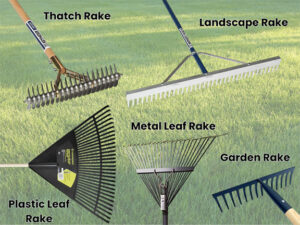 A garden rake helps to clear leaves, spread mulch, and level soil. There are different types of rakes for various tasks:
A garden rake helps to clear leaves, spread mulch, and level soil. There are different types of rakes for various tasks:
- Leaf Rake: Has flexible tines, perfect for gathering leaves and lightweight debris.
- Bow Rake: Features sturdy metal tines, ideal for spreading soil, mulch, or gravel.
- Thatch Rake: Specifically designed to remove thatch buildup from lawns.
- Landscape Rake: A wide-headed rake that smooths out soil or gravel for landscaping projects.
Wash off mud and store rakes in a dry place to maintain their effectiveness. A metal rake is more durable than a plastic one and can handle tougher tasks. Leaf rakes are designed for gathering leaves, while bow rakes are better for soil work.
Wheelbarrow
A wheelbarrow is handy for transporting soil, compost, plants, and other heavy materials around the garden. Choose between single-wheel (for maneuverability) or dual-wheel (for stability) models. Clean the tub after hauling soil or compost to prevent buildup.
Weeder
A weeder is a small but effective tool for removing weeds from your garden without disturbing nearby plants. Types of weeders include:
- Hand Weeder: A small, forked tool that helps lift weeds out of the soil.
- Stand-Up Weeder: Allows for weed removal without bending over, often with a claw-like mechanism.
- Cape Cod Weeder: Features a curved blade for slicing weeds close to plant roots.
- Hori-Hori Knife: A versatile weeding tool with a sharp, serrated blade for cutting through tough roots.
Clean after each use to prevent soil from caking onto the blade. Hand weeders are ideal for precise work, while stand-up weeders allow you to remove weeds without bending over.
Final Thoughts on Garden Tools
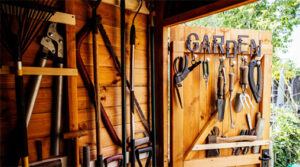 Starting a garden is a fulfilling journey, and having the right garden tools will set you up for success. Investing in quality tools will make gardening more enjoyable and help you maintain a thriving garden. As you gain experience, you may want to add specialized tools, but these essentials will serve as a solid foundation for any beginner. Regular maintenance, including cleaning, sharpening, and proper storage, will ensure your tools remain in excellent condition for years to come.
Starting a garden is a fulfilling journey, and having the right garden tools will set you up for success. Investing in quality tools will make gardening more enjoyable and help you maintain a thriving garden. As you gain experience, you may want to add specialized tools, but these essentials will serve as a solid foundation for any beginner. Regular maintenance, including cleaning, sharpening, and proper storage, will ensure your tools remain in excellent condition for years to come.
You can purchase garden tools from Dollar stores (low-end), big box stores like Home Depot and Canadian Tire (mid-range) or at garden centres/greenhouses and specialty tool stores like Lee Valley Tools (mid-range with some higher end items). Top of the range are tools made by either Burgon & Ball or Spear & Jackson. Both companies originate from Sheffield, England and have been around for almost 300 years. You’ll pay top money for these brands but they are tools you can pass on to your kids or grandkids. Other notable top brands include Kent & Stowe, Wilkinson Sword, and Sneeboer.
Now, grab your trowel, put on those gloves, and get ready to dig into the wonderful world of gardening! May your plants grow strong, your flowers bloom bright, and your weeds surrender without a fight. Happy gardening!




